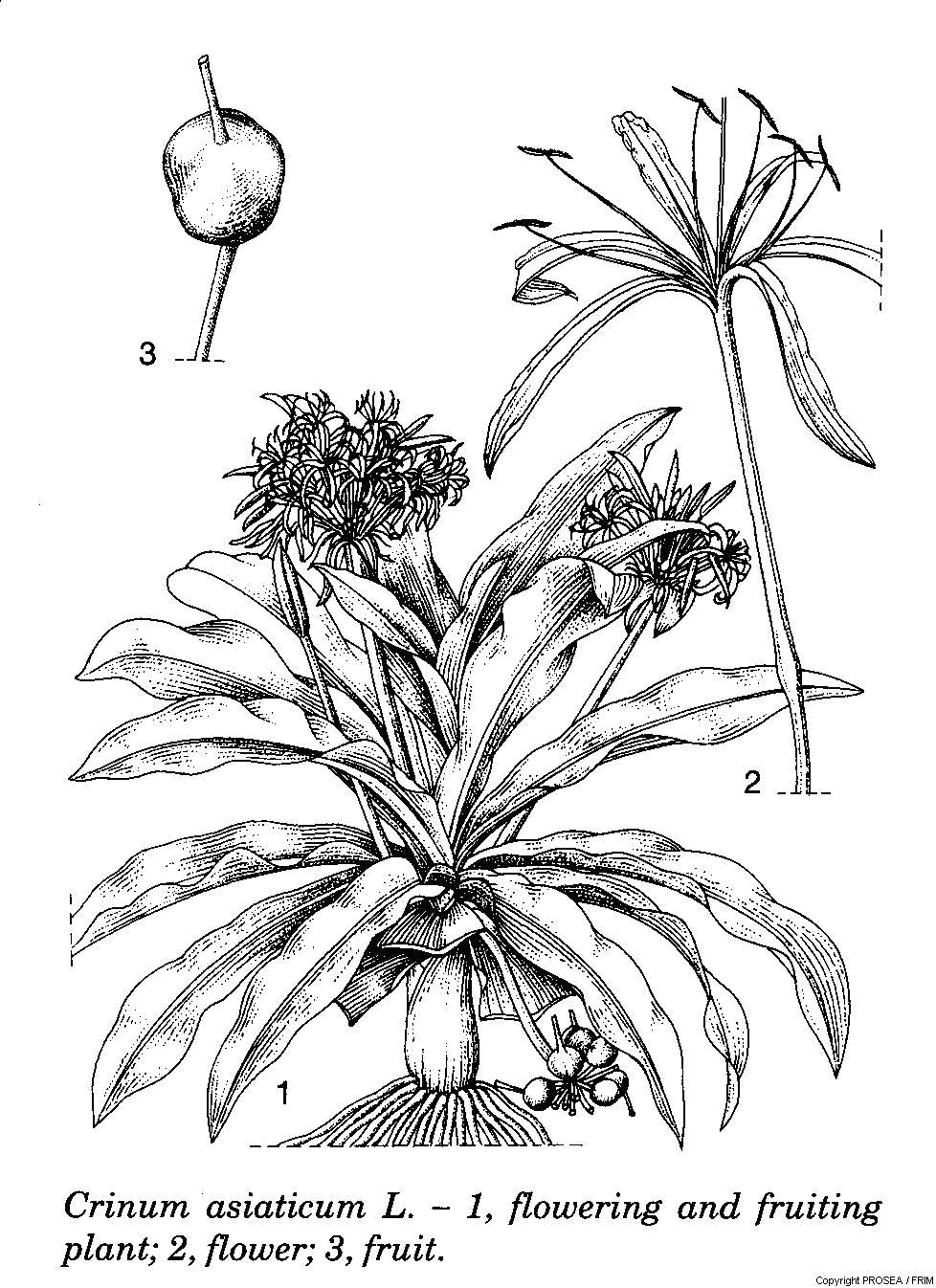Crinum asiaticum L.
Family
Amaryllidaceae
Synonyms
Crinum amabile Donn., Crinum macrantherum Engl., Crinum defixum auct. non Ker Gawl., Crinum macrophyllum Hallier.
Vernacular Names
| Malaysia | Bakong, bawang hutan (General). |
| English | Crinum lily, poison bulb. |
| Indonesia | Bakung (General), kajang-kajang (Palembang), fete-fete (Ternate). |
| Philippines | Bakong (General), agabahan (Bisaya), biliba (Subanun). |
| Thailand | Phlapphueng (Central), lilua (Northern). |
| Vietnam | N[as]ng hoa tr[aws]ng, t[or]i voi, l[as] n[as]ng. |
| Papua New Guinea | Morabau (Kabulula, Trobriand Islands), didil (Lesu, New Ireland), pokaan (Western Highlands). |
| French | Crinole asiatique. |
Geographical Distributions
Crinum asiaticum is distributed from India to Southeast Asia, north-western Australia and Polynesia.
Description
C. asiaticum is a herb about 1-1.8 m tall, with a bulb measures about 5-15 cm in diametre and many bulblets present. It has a false stem up to 50 cm long and clothed with old leaf sheaths.
The leaves are 20-30 narrowly to broadly elliptical. The size of its leaf is 50-150 cm x 3.5-20 cm, lower horizontal, and upper semi-erect. Its margins are entire and smooth. The umbel is 10-50-flowered.
The stalk of inflorescence measures between 50-100 cm long while bracts measure 9-16 cm x 3-5 cm in size and pale. The flowers are fragrant at night. It is white but sometimes pink. The stalk of each individual flower measures 0.5-2.5 cm long. The filaments of stamens are slender and measure 3.5-7 cm long.
The fruits are beaked and fleshy. It is yellowish-green. The seeds are egg-shaped, 1-5-seeded and often angular.
Ecology / Cultivation
C. asiaticum is extremely polymorphic, and found along sandy shores and shaded, humid localities at low altitudes.
Line Drawing / Photograph
References
- Plant Resources of South-East Asia No.12(2): Medicinal and poisonous plants 2.




